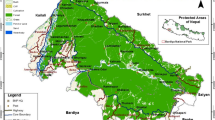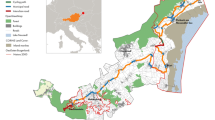Abstract
For the last 20 years, human–wildlife conflicts have been rapidly increasing in towns. Although people want “greener” cities, the expansion of disliked species causes problems that are difficult to manage and to reduce. The complexity of the numerous factors involved in these human–wildlife relations needs the development of a comprehensive tool for urban planners. Today, with the development of computers and geographical information systems, it is easier to analyze and combine different spatial data as methods used for the management of risks in studies of natural hazards. Here we present a method for assessing and mapping the risk in cases of human–wildlife conflict. An application to starling management in a town in western France will show the efficiency of our methods to combine information given by a network of experts and to highlight higher risk sites. The map of risk provides a spatial result useful for comprehension, communication between people and agencies, and public education.
Similar content being viewed by others
Author information
Authors and Affiliations
Rights and permissions
About this article
Cite this article
LE LAY, G., CLERGEAU, P. & HUBERT-MOY, L. Computerized Map of Risk to Manage Wildlife Species in Urban Areas. Environmental Management 27, 451–461 (2001). https://doi.org/10.1007/s002670010161
Issue Date:
DOI: https://doi.org/10.1007/s002670010161




